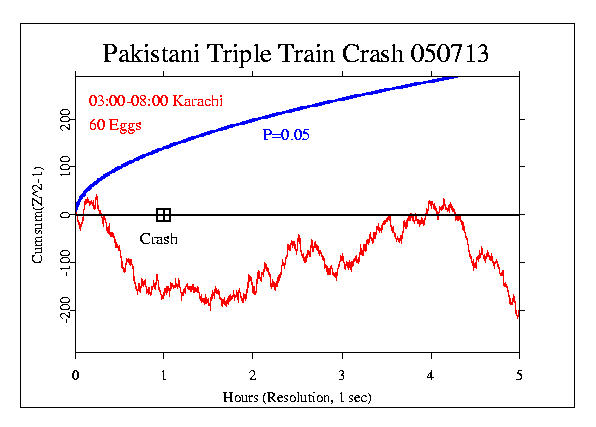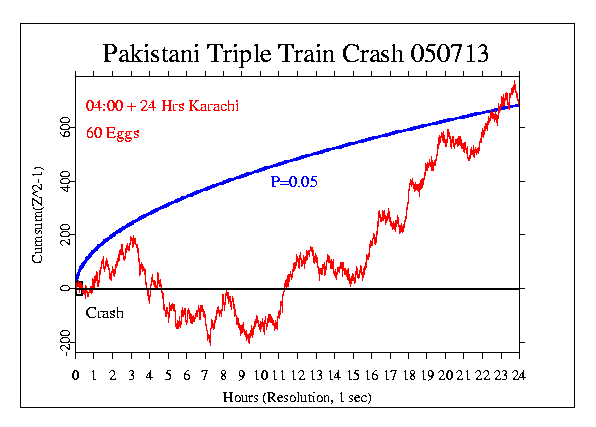|
KARACHI, Pakistan -- Three passenger trains crashed in southern Pakistan
early July 13, 2005, killing more than 100 people, police and railway officials
said. Hundreds more were injured, and authorities said the toll could
rise.
It was Pakistan's deadliest train wreck in more than a decade and left
the station yard covered with twisted wreckage. Officials said body
parts were strewn about and rescuers were forced to cut through metal to
reach some of the casualties.
The accident occurred at about 4 a.m. when a train sitting in a station
near Ghotki, in southern Sindh province, was rear-ended by a second
train, said Abdul Aziz, a senior controller at Pakistan Railways. The
collision caused several cars to derail and spill over onto another
track, where they were struck by a third train, causing further
derailment, he said. Aziz said 60 bodies had been recovered.
Estimates of the number of deaths range from 150 to 200.
I received information about the crash from Hans Wendt, and proceeded
with an exploratory examination to learn more about what to expect from
terrible accidents, especially in non-western locations (which get
relatively slow and limited media attention).
Two graphs are shown, one for a time
period beginning 1 hour before the crash to 4 hours after
and a second graph with a full 24 hours beginning with the crash time.
The first graph shows a steep decline beginning 45 minutes before the
crash, but no overall significant departure. The longer period
oscillates in a typical random walk for several hours, but then takes on
a steady trend for 12 to 14 hours later in the day.
If this pattern holds across many instances, it suggests that the EGG
network reaction tends to be delayed, following broader dissemination of
the news.


|